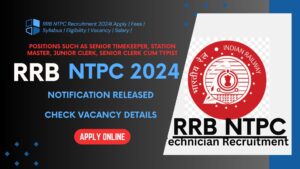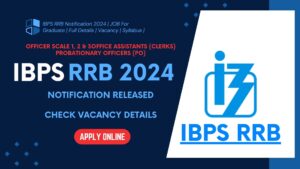ECO-01(Business organisation) is a subject code used by the Indira Gandhi National Open University (IGNOU) for one of its courses. Business organization provides a comprehensive overview of how the business is structured, managed, and operated, serving as a foundational document for internal and external stakeholders. Every student wants to achieve academically and looks for helpful resources to help them navigate the vast ocean of knowledge. Exam preparation is an important skill for students pursuing the Bachelor of Computer Applications degree at Indira Gandhi National Open University (BCA). One treasure trove of the vast array of study resources and tools is Short Notes. These brief, to-the-point descriptions serve as a milestone, pointing the way to testing achievement.

Introduction Of ECO-01
Despite IGNOU BCA exam preparation can be difficult, success is possible if you have the right resources. We’ll give you important, short notes on important subjects from the IGNOU BCA curriculum in this blog article. You can ace your examinations and accelerate your revision process with the help of these short notes.
Understanding the Importance of ECO-01 Short Notes:
1. Overview : Brief notes reduce an extensive amount of material into essential ideas and points. They offer a rapid and effective means of studying the key subjects in advance of the examination.
2. Focus on the Essentials: You may focus on each topic’s key elements by summarizing the available information. This guarantees that you cover the most relevant subjects and helps in setting priorities for your study materials.
3. Improved Retention: Taking quick notes requires you to take an active role with the information. Compared to passive reading, active learning promotes improved understanding and retention of knowledge.
4. Quick Reference: Brief notes are a quick reference that come in helpful when making last-minute changes. To fast brush up on specific concepts or formulas, you can swiftly scan them.
5. Time management: You may cover a lot of ground in less time by taking brief notes. This is very helpful if you don’t have much time to study before the test.
Most Repeated ECO-01 Important Questions for IGNOU BCA Exams Semester Wise :
Block-1 of ECO-01
Q1. Define the term ‘business’ and state it’s essential features. How is it different from the profession ?
Ans- Business refers to an organization or entity engaged in commercial, industrial, or professional activities with the aim of earning profits. It involves the production, distribution, and sale of goods or services to customers in exchange for money.
The essential features of business include:
- Economic Activity: Business involves economic activities aimed at generating income and maximizing profits.
- Exchange of Goods or Services: Businesses produce goods or provide services that meet the needs and wants of customers in exchange for monetary compensation.
- Profit Motive: The primary objective of business is to earn profits by selling goods or services at a price higher than the cost of production.
- Risk and Uncertainty: Business activities involve risks and uncertainties related to market fluctuations, competition, technological changes, and other factors that may affect profitability.
- Capital and Investment: Businesses require capital investment to start, operate, and expand their operations. Capital may be obtained from owners, investors, creditors, or through retained earnings.
- Legal Entity: Businesses are often recognized as legal entities separate from their owners, which means they can enter into contracts, own property, sue or be sued, and engage in other legal activities.
On the other hand, a profession refers to a specialized occupation or vocation that requires specific education, training, and expertise in a particular field. While professions may also involve economic activities and the exchange of services for compensation,
Q2. What are requisite features of the ideal form of business organisation ?
Ans-The requisite features of the ideal form of business organisation include:
- Limited Liability: Protection of personal assets from business debts.
- Separate Legal Entity: The business is distinct from its owners.
- Perpetual Existence: Continuity of the business beyond the lifespan of its owners.
- Ease of Transferability of Ownership: Shares can be bought and sold easily.
- Democratic Management: Shareholders have a say in decision-making through voting rights.
- Capital Raising: Ability to raise funds through the sale of shares.
- Professional Management: Qualified individuals manage day-to-day operations.
- Public Confidence: Transparent operations to gain trust and confidence from stakeholders.
Q3. Distinguish Between ‘Entrepreneur’ and ‘Promoter’ ?
Ans- The distinction between an “entrepreneur” and a “promoter” lies in their roles and responsibilities in the business context:
Entrepreneur:
- An entrepreneur is an individual who conceives an idea, takes risks, and initiates a business venture.
- They are responsible for identifying opportunities, organizing resources, and managing the business to achieve objectives.
Promoter:
- A promoter is a person or group responsible for the formation and organization of a company.
- Their role involves tasks such as incorporating the company, raising initial capital, and drafting the company’s memorandum and articles of association.
Block-2 Of ECO-01
Q1. What do you mean by cooperative form of organization? Explain It’s merits and limitations ?
Ans-Certainly! Here’s a concise explanation of the cooperative form of organization, along with its merits and limitations:
Cooperative Form of Organization:
- A cooperative is a voluntary association of individuals who come together to meet their common economic, social, and cultural needs and aspirations.
Merits of Cooperatives:
- Democratic Control: Every member has an equal say in the decision-making process, promoting a sense of ownership and participation.
- Equitable Distribution of Profits: Profits are distributed among members in proportion to their transactions with the cooperative, fostering economic equality.
- Stability and Security: Members benefit from stable prices, reliable supply, and access to essential goods and services, enhancing their economic security.
Limitations of Cooperatives:
- Limited Capital: Difficulty in raising capital due to the reliance on member contributions may hinder expansion and competitiveness.
- Managerial Challenges: Cooperative management may face challenges in decision-making, coordination, and professional expertise, affecting efficiency and growth.
- Conflict of Interest: Conflicts may arise between members’ individual interests and the collective goals of the cooperative, leading to disputes and inefficiencies.
Q2. What is a Stock Exchange ? Explain The Factors affecting price in a stock exchange ?
Ans-A stock exchange is a regulated marketplace where securities such as stocks, bonds, commodities, and derivatives are bought and sold. It provides a platform for companies to raise capital by issuing shares and for investors to buy and sell securities.
- Supply and demand dynamics: The balance between the number of shares available for sale (supply) and the desire of investors to buy them (demand) affects stock prices.
- Economic conditions: Factors such as GDP growth, inflation, interest rates, and employment levels influence investor confidence and, consequently, stock prices.
- Company performance: Quarterly earnings reports, revenue growth, profitability, and corporate announcements impact investor perceptions of a company’s value and future prospects.
- Investor sentiment: Market sentiment, driven by factors like fear, greed, optimism, and pessimism, can cause rapid fluctuations in stock prices.
- Global events: Geopolitical tensions, natural disasters, trade agreements, and other international developments can create uncertainty and affect stock markets worldwide.
- Regulatory environment: Changes in regulations or government policies related to taxation, trade, or industry oversight can impact investor behavior and stock prices.
- Industry trends: Sector-specific factors, such as technological advancements, consumer preferences, and competitive pressures, influence the performance of companies within a particular industry.
- Market speculation: Speculative trading, fueled by rumors, news, or market trends, can lead to short-term volatility and affect stock prices.
- Liquidity: The ease with which stocks can be bought or sold without significantly impacting their prices affects market stability and investor confidence.
- Technical factors: Analytical tools and indicators, such as moving averages, volume trends, and chart patterns, are used by traders to predict price movements and make investment decisions.
Block-3 Of ECO-01
Q1. How does advertisement differ from publicity?
Ans- Advertisement involves paid promotion by a business to convey a targeted message, aiming to influence consumer behavior and increase sales or brand recognition. It offers precise control over content, placement, and timing. In contrast, publicity is free media coverage gained through newsworthiness or interest value. Unlike advertisements, publicity is not paid for and provides less control over the message’s content or placement. However, it often carries more credibility and can reach a wider audience through various media channels. While advertisements are strategic and controlled, publicity relies on the interest of journalists or media outlets to cover a story, enhancing brand visibility and reputation.
Q2. What is the advertisment and objective of advertisment?
Ans- Advertising refers to the paid promotion of products, services, or ideas through various media channels to reach and influence a target audience. The primary objective of advertising is to communicate with potential customers, create brand awareness, generate leads, drive sales, and ultimately achieve business objectives. By using persuasive messages, visuals, and other creative elements, advertisers aim to attract attention, evoke interest, stimulate desire, and prompt action from the audience. Ultimately, the goal is to build brand loyalty, increase market share, and maximize profitability.
Q3. Define ‘Advertisement Media’? State it’s different types and the requisites of an ideal medium ?
Ans- Advertisement media refers to the various channels or platforms through which advertising messages are communicated to the target audience. There are different types of advertisement media, including print media (newspapers, magazines), electronic media (television, radio), outdoor media (billboards, posters), digital media (internet, social media), and direct mail.
The requisites of an ideal advertisement medium include:
- Reach: The medium should have the ability to reach the desired target audience effectively.
- Frequency: It should allow for repeated exposure of the advertising message to reinforce brand awareness.
- Cost-effectiveness: The medium should offer a reasonable cost per exposure or cost per thousand impressions (CPM).
- Flexibility: It should provide flexibility in terms of ad placement, timing, and customization.
- Engagement: The medium should engage the audience and encourage interaction with the advertising content.
- Measurability: It should allow for the measurement of advertising effectiveness and return on investment (ROI).
- Compatibility: The medium should be compatible with the advertiser’s objectives, brand image, and messaging strategy.
Q4. Channel of distribution used for industrial goods?
Ans- Certainly! Channels of distribution for industrial goods include:
- Direct Sales: Manufacturers sell directly to end-users or industrial customers.
- Industrial Distributors: Buy goods in bulk and resell them to industrial customers, offering additional services.
- Wholesalers: Act as intermediaries between manufacturers and industrial customers, specializing in specific industries.
- Agents and Brokers: Represent manufacturers and facilitate sales transactions for a commission.
- Value-Added Resellers (VARs): Enhance products with additional features before selling to end-users.
- Online Marketplaces: Platforms like e-commerce sites offer a broad reach and streamline the purchasing process.
Q5. Discuss the various function performed by wholesaler ?
Ans- Certainly! Wholesalers perform vital functions in the distribution process, including bulk purchasing, warehousing, inventory management, assortment, breaking bulk, transportation, credit facilities, marketing support, risk bearing, and order processing. They streamline the flow of goods from manufacturers to retailers, offering convenience, flexibility, and support to retailers while assuming risks and managing inventory efficiently.
Block-4 Of ECO-01
Q1. What is difference between Overdraft And Cash credit ?
Ans- Overdraft vs. Cash Credit:
- Nature of Credit:
- Overdraft: Allows withdrawing more money than available funds.
- Cash Credit: Provides a loan up to a specified limit based on collateral.
- Interest Calculation:
- Overdraft: Charged on the overdrawn amount.
- Cash Credit: Charged on the entire credit utilized.
- Collateral:
- Overdraft: May or may not require collateral.
- Cash Credit: Typically requires collateral.
- Purpose:
- Overdraft: Short-term cash flow management.
- Cash Credit: Financing working capital needs.
- Flexibility:
- Overdraft: Borrow and repay funds as needed.
- Cash Credit: Provides ongoing access to funds up to the limit.
Q2. What is Pledge and Hypothecation ?
Ans- Pledge vs. Hypothecation:
- Definition:
- Pledge: Involves depositing goods as security for a loan.
- Hypothecation: Allows using assets as collateral without transferring possession.
- Ownership:
- Pledge: Lender gains possession of pledged goods.
- Hypothecation: Borrower retains ownership of hypothecated assets.
- Risk Factor:
- Pledge: Lower risk for the lender due to possession of assets.
- Hypothecation: Higher risk for the lender as assets remain with the borrower.
- Usage:
- Pledge: Commonly used for short-term loans.
- Hypothecation: Often used for long-term financing.
- Legal Implications:
- Pledge: Involves a higher degree of legal formality.
- Hypothecation: Less formal process compared to pledge.
Q3. Explain the term Life Insurance and Fire Insurance ?
Ans- Life Insurance vs. Fire Insurance:
- Life Insurance:
- Definition: Provides financial protection to beneficiaries upon the insured person’s death.
- Coverage: Pays a lump sum or periodic payments to beneficiaries.
- Purpose: Ensures financial security for dependents after the policyholder’s demise.
- Types: Term life, whole life, and endowment policies are common variants.
- Premiums: Determined by factors like age, health, and coverage amount.
- Fire Insurance:
- Definition: Offers coverage against losses due to fire-related damage or destruction of property.
- Coverage: Compensates for repair or replacement costs of damaged property.
- Purpose: Protects property owners from financial losses caused by fire accidents.
- Types: Includes standard fire policies, specialized policies for specific risks, and comprehensive property insurance.
- Premiums: Calculated based on factors like property value, fire safety measures, and location.
Q4. What do you mean by risk management? Describe briefly the insurance risks and the non-insurable risks ?
Ans- Risk Management:
- Definition: The process of identifying, assessing, and mitigating risks to minimize potential losses.
- Objective: To safeguard assets, ensure business continuity, and enhance decision-making.
- Components: Risk identification, risk assessment, risk treatment, and risk monitoring.
Insurance Risks:
- Insurable Risks: Events or situations that can be covered by insurance policies.
- Examples: Property damage, accidents, liability claims, illness, and death.
- Coverage: Insurers offer policies to transfer these risks to mitigate financial losses.
Non-Insurable Risks:
- Definition: Risks that cannot be covered by insurance due to their unpredictable nature or high frequency.
- Examples: Economic downturns, regulatory changes, war, nuclear accidents, and intentional acts.
- Treatment: Businesses manage non-insurable risks through alternative strategies such as risk avoidance, risk retention, or contractual arrangements.
Q5. “All Business risks are not insurable” in the light of this statement, explain insurable risks?
Ans- All Business Risks are not Insurable:
- This statement highlights that while many risks faced by businesses can be mitigated through insurance, certain risks are inherently uninsurable due to their nature or characteristics.
Insurable Risks:
- Definition: Insurable risks are those events or situations for which insurance coverage is available from insurers.
Q6. Explain the choice of mode of transport ?
Ans- Choice of Mode of Transport:
- The choice of transportation mode involves selecting the most suitable method for moving goods or people from one location to another.
- Several factors influence this decision, including the nature of the goods, distance, speed requirements, cost considerations, and environmental impact.
Factors Influencing Mode of Transport:
- Nature of Goods: Fragile or perishable goods may require specialized handling, such as refrigeration, making air or express delivery more suitable.
- Distance: Short distances may favor road transport, while long-distance shipments often utilize rail or sea transport for cost-effectiveness.
- Speed Requirements: Urgent shipments may necessitate air transport, which offers fast delivery but higher costs compared to other modes.
- Cost Considerations: Different modes of transport vary in terms of cost, including transportation fees, fuel expenses, and infrastructure investments.
- Reliability and Safety: Some modes may offer greater reliability and safety than others, influencing the choice based on risk management considerations.
- Environmental Impact: Sustainable businesses may prioritize modes of transport with lower carbon emissions or environmental footprints, such as rail or sea transport over road or air.
Q7. What are the essentials of a good transport System ?
Ans- Essentials of a Good Transport System:
- Accessibility: Easy access to locations.
- Efficiency: Time and cost-effective.
- Safety: Priority on passenger and cargo security.
- Reliability: Consistent and dependable service.
- Sustainability: Minimize environmental impact.
- Integration: Seamless connectivity between modes.
- Infrastructure: Adequate facilities and networks.
- Technology: Utilize advanced tools for efficiency.
- Accessibility: Inclusive for all individuals.
- Economic Viability: Balanced costs and benefits.
Block-5 Of ECO-01
Q1. What is a public enterprise? State the features and objective of a public enterprise ?
Ans-Public Enterprise: A public enterprise refers to a business entity that is owned and operated by the government. Here’s a brief summary of its features and objectives:
Features:
- Ownership: Owned and controlled by the government.
- Management: Operated by appointed officials or government representatives.
- Purpose: Serves public interest rather than profit maximization.
- Funding: Often funded by taxpayers’ money or government investments.
- Accountability: Subject to government regulations and oversight.
- Social Responsibility: Focuses on providing essential services to citizens.
- Monopoly: Often operates in sectors where natural monopolies exist.
- Long-term Planning: Can pursue long-term objectives without immediate profitability concerns.
Objectives:
- Service Provision: Provide essential services such as transportation, healthcare, education, and utilities to citizens.
- Social Welfare: Enhance the welfare of the public by ensuring equitable access to goods and services.
- Economic Development: Contribute to economic growth and development through infrastructure development and job creation.
- Stability: Ensure stability in critical sectors by preventing market failures and maintaining essential services.
- Strategic Goals: Achieve strategic objectives such as national security, industrial development, and regional balance.
Q2. What is Public Corporation ?
Ans- Public Corporation:
A public corporation, also known as a government corporation, is a legal entity established by the government to undertake commercial activities on behalf of the state. Here’s a concise overview:
Definition: A public corporation is a distinct legal entity created by the government through special legislation to engage in commercial or business activities.
Features:
- Legal Status: Possesses a separate legal identity from the government.
- Ownership: Owned and controlled by the government, often at the national or local level.
- Autonomy: Operates with a degree of autonomy and independence in decision-making.
- Profit Motive: Generally aims to generate profits while fulfilling public service objectives.
- Capitalization: Funded by the government through equity investments or loans.
- Accountability: Accountable to the government, shareholders, or stakeholders for its performance.
- Objectives: Focuses on achieving both commercial goals and public service objectives.
Examples:
- Indian Railways: Operates as a public corporation under the Ministry of Railways in India.
- United States Postal Service (USPS): A public corporation responsible for postal services in the United States.
- BBC (British Broadcasting Corporation): Funded by the UK government but operates independently as a public corporation.
Q3. What is Government Company ?
Ans- Government Company:
A government company refers to a type of corporate entity that is owned and operated by the government. Here’s a succinct overview:
Definition: A government company is a legal entity established by the government under the Companies Act to undertake commercial activities and provide services on behalf of the state.
Features:
- Ownership: Majority ownership vested with the government, either at the central or state level.
- Incorporation: Registered under the Companies Act as a public limited company, with shares issued to the government.
- Management: Governed by a board of directors appointed by the government, which oversees its operations.
- Capital: Capitalized through government investments, loans, or issuance of shares to the public.
- Objectives: Operates with the dual objective of profit generation and fulfilling public service obligations.
- Autonomy: Enjoys a degree of operational autonomy but remains subject to government regulations and policies.
- Accountability: Accountable to the government, shareholders, and regulatory authorities for its performance and compliance.
Examples:
- Air India: Owned and operated by the Government of India, providing air transport services.
- Bharat Heavy Electricals Limited (BHEL): A public sector undertaking in India engaged in the manufacturing of power plant equipment.
- Indian Oil Corporation (IOC): A government-owned oil and gas company involved in refining, marketing, and distribution of petroleum products.
Read More: Important Short Notes for IGNOU BCA Exam Sem1 to 6.
Q4. Define Public Utility Undertaking ?
Ans- A public utility undertaking refers to an organization or entity responsible for providing essential services to the public, such as electricity, water supply, transportation, telecommunications, or sanitation. These services are considered vital for the functioning of society, and often, public utility undertakings are subject to regulation to ensure fair access and quality standards for all users.
Q5. Enumerate the broad aspects of price policy followed by public utilities ?
Ans- Public utilities typically adopt specific price policies to ensure affordability, sustainability, and fair access to essential services. Broad aspects of these price policies include:
- Affordability: Ensuring that prices remain reasonable and within the reach of all sections of society, especially low-income groups.
- Cost Recovery: Setting prices to cover operational costs, maintenance, infrastructure development, and investments required for service provision.
- Tariff Structure: Designing tariff structures that reflect usage patterns, such as flat rates, tiered pricing, or time-of-use pricing, to encourage efficient consumption.
- Subsidies: Providing subsidies or targeted assistance to economically disadvantaged groups to make essential services more accessible without compromising financial viability.
- Regulatory Oversight: Subjecting pricing decisions to regulatory oversight to prevent monopolistic practices, ensure transparency, and balance the interests of consumers and service providers.
- Long-Term Sustainability: Implementing pricing strategies that promote long-term financial sustainability while supporting infrastructure maintenance, upgrades, and expansion.
- Demand Management: Using pricing mechanisms to influence consumer behavior, encourage conservation, and manage demand during peak periods to optimize resource utilization.
Download PDF Of Above Content In 3 Paper
Conclusion:
With these IGNOU ECO-01 BCA short notes, you’ll be well-equipped to tackle your exams with confidence. Remember to complement your study efforts with regular practice and mock tests. Good luck!









[…] Read More : ECO-01(Business Organisation) Important Short Notes| Expected Question |IGNOU BCA| […]
[…] Read More : ECO-01(Business Organisation) Important Short Notes| Expected Question |IGNOU BCA| […]